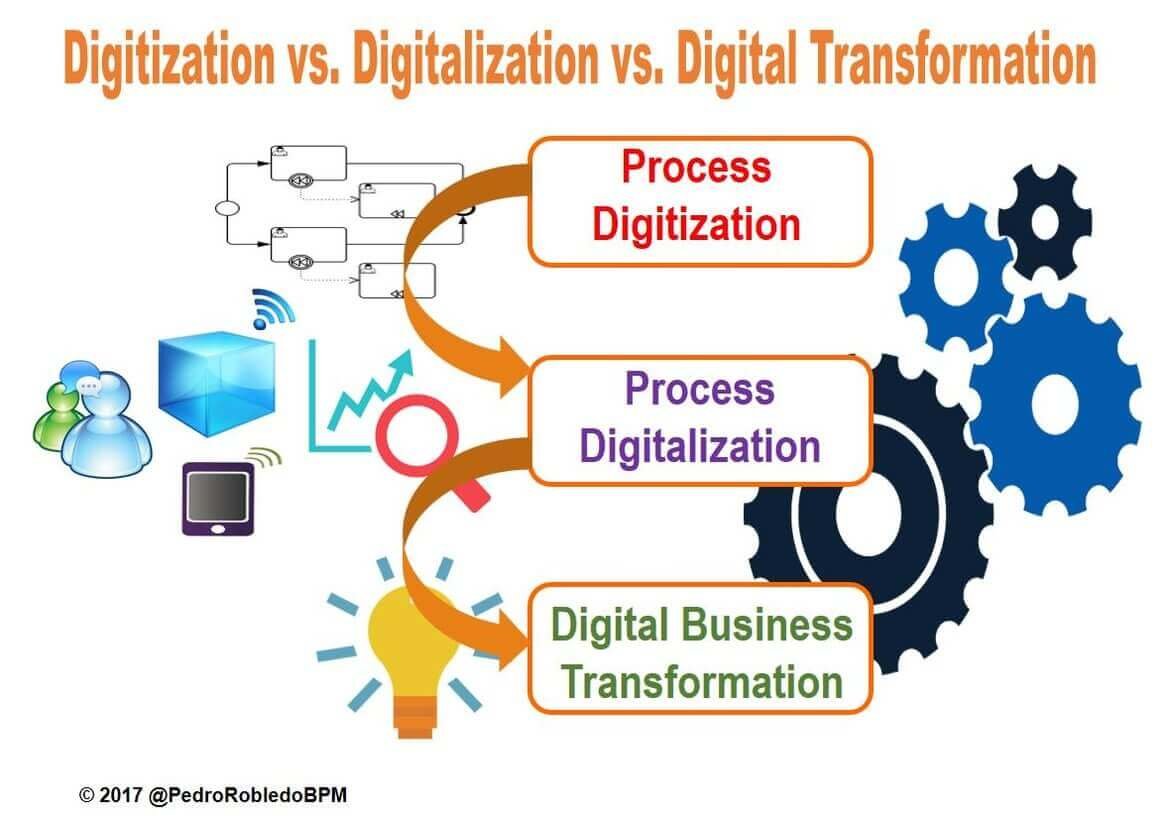Digitization of processes: what is it and what are the benefits?

Nowadays, the digitization of processes is one of the key aspects to add value to businesses and make them more competitive.
It’s no secret that as technology evolves, businesses must harness the potential of digital tools, as well as adapt to new consumer needs.
However, digitization is a concept that still generates misunderstandings today. What does it really mean to digitize a company? What advantages does it present? We have prepared this article to address these —and other— questions about digitizing processes.
Keep reading!
What is process digitization?
When talking about digitalization of companies , many believe that it is only about transferring all analog information to digital data.
And although the digitization of information and the creation of new digital data is part of this process, the truth is that it goes much further.
So what really is process digitization? According to Gartner , we can define it as the use of digital technologies to transform a business model, in a way that increases the opportunities to create added value and generate income in a company .
In this sense, digitizing processes implies updating them to make them more efficient and profitable, with the ultimate goal of increasing productivity and customer satisfaction.
At the same time, digitizing processes means leaving behind paper documents and analog tasks, as well as strategically implementing digital tools, technologies and work environments.
For this implementation to be successful, it is necessary to adopt a digital culture in organizations, guided by data-driven (data-driven) and digital-first (which prioritize digital) work philosophies.
What are the types of digitization?
On many occasions, organizations in the process of digitizing focus all their efforts on a single aspect, such as operations, without taking into account that there are different types of digitization.
By defining the concept, we already anticipated some types of digitalization that companies can face and, now, we want to tell you in detail what they are.
Remember that they are not isolated categories, but are interconnected, so it is impossible to achieve a true digital transformation in your business without addressing each one of them.
Process transformation
It is probably the most important, since it encompasses the rest, and is related to digitization at an operational and technical level.
This type of digitalization seeks to improve the quality and reduce the costs of internal processes. You can involve any area of the company that needs to optimize its processes through digital tools.
Thus, an example of HR digitization could be the use of an electronic signature solution to streamline the management of employment contracts.
Transformation of business models
As we have seen, in many cases digitization implies a root transformation in business. This is the case of companies that reinvent themselves hand in hand with technology to modify their product or service, or radically change the way they sell it.
Change of market or sector
If digital transformation means making the most of the new opportunities offered by technology, this type of digitization is the best example of that idea.
It is about going digital to begin to position a company in a new market segment or, directly, to expand into other areas, as giants such as Red Bull or Amazon have done.
Transformation of organizational culture
We already anticipated it: the digitization of processes is not only about incorporating technologies, but fundamentally about redefining business objectives, workflows and the mentality of employees.
In short, digital transformation always requires a cultural transformation at the organizational level.
What are the advantages of digitization?
There are many benefits that come from the digitization of processes, but the 3 most important that it can bring to any company, large or small, are:
- Increased productivity : Automating manual and repetitive tasks not only streamlines work, but also frees employees to focus on tasks that add value to the business.
- Cost reduction : From the improvement in workflows, digitization allows savings of up to 90% in operating costs.
- Facilitates decision making : As the ability to collect and analyze information through Big Data and Artificial Intelligence increases, it is possible to make better decisions based on reliable data.
3 examples of digitization
At this point, you may be interested in learning about success stories of companies that managed to create thanks to the digitization of processes. Let’s see!
1. Axtel
In 2019, Axtel, the leading Mexican company in the telecommunications industry, set out to optimize document management as part of its digital transformation process.
To that end, they implemented DocuSign’s electronic signature solution, which allowed them to streamline, streamline and make contract management more reliable.
As of this change, Axtel increased the contracts signed monthly by 300% and, currently, they use the electronic signature in 85% of business documents.
2.Nike
Even the most recognized brands need to go digital to stay current. This is the case of Nike, which in 2017 used the digitization of marketing processes with the aim of increasing its speed-to-market and direct communication with customers.
For this reason, they doubled their efforts in the analysis of digital data, the optimization of the user experience in their e-commerce and designed an omnichannel brand experience (both online and offline ).
Thanks to its digital-first strategy , Nike managed to grow even during the crisis caused by the pandemic, increasing its share price by 69%.
3. AstraZeneca
For companies in the medical and pharmaceutical industries, speeding up processes not only means higher revenues, but also the ability to get patients the medicines they need faster.
With that in mind, in 2014 pharmaceutical company AstraZeneca began identifying areas that could be digitized to streamline processes and improve the patient experience.
As part of that change, the company adopted the electronic signature DocuSign eSignature, initially to manage vendor requests and later in sales, procurement and human resources departments.
As a result of digitization, 85% of deals are now signed in less than a day. In addition, this streamlining managed to increase customer satisfaction by 16%.
Now is your turn. Are you ready to digitize your business? Do a free trial of DocuSign right now and see how electronic signatures increase productivity in your company!






